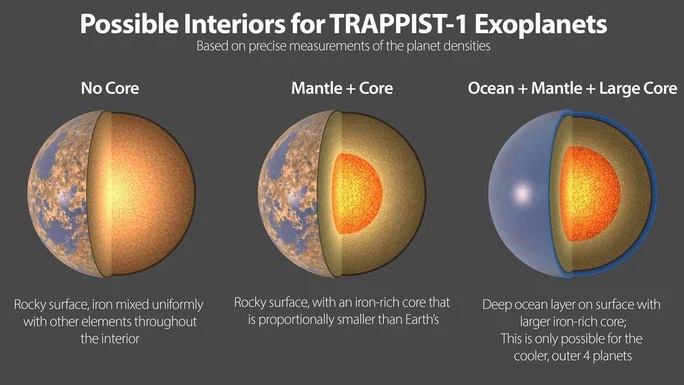The TRAPPIST-1 star system continues to be amazing after proving for several years that it has seven ocean planets: these seven planets also have the same composition and texture as our Earth.
According to the study which was just published in the Planetary Science Journal, the 7 planets have similar densities and are rocky planets with basic materials such as near, oxygen, magnesium and silicon similar to Earth. The material composition ratio may differ slightly from Earth because these 7 planets have a density of less than 8% of Earth. The authors argue that it is the ratio of iron that makes this difference: they represent only 21% of the interior of the planet, while on Earth, it is 32%.
The team led by NASA therefore proposed three versions of what these planets could have: a large ocean covering the planet, a thin mantle and a large nucleus; the ocean is scattered like the Earth, the mantle is thick, the core is slightly smaller than the Earth; Scattered oceans, thick mantle and heavy, coreless materials. In particular, scientists are inclined to hypothesize that some of the 7 planets will be version 1, while another is version 2 – most like Earth.
But more importantly, they all have water and are rocky planets like ours. These two factors offer a great opportunity for life to arise. The three planets closest to the mother star may be too hot, but if they have dense atmospheres like Venus, water could still exist in a liquid state.
The 7 planets rotate very close to the parent star, closer than the distance to the Sun and Mercury. However, their “mother” is a red dwarf star that is several times cooler than the Sun, so some planets still have temperatures compatible with life. Scientists used repeated observations of starlight combined with temporal measurements of the orbits of the planets, allowing astronomers to estimate the mass and diameter of the planets.
In Phys.org, astrophysicist Caroline Dorn, a member of the research team, said that this star system offers an excellent opportunity for a “solar system” with unique diversity and uniformity. Rocky planets look like Earth.


